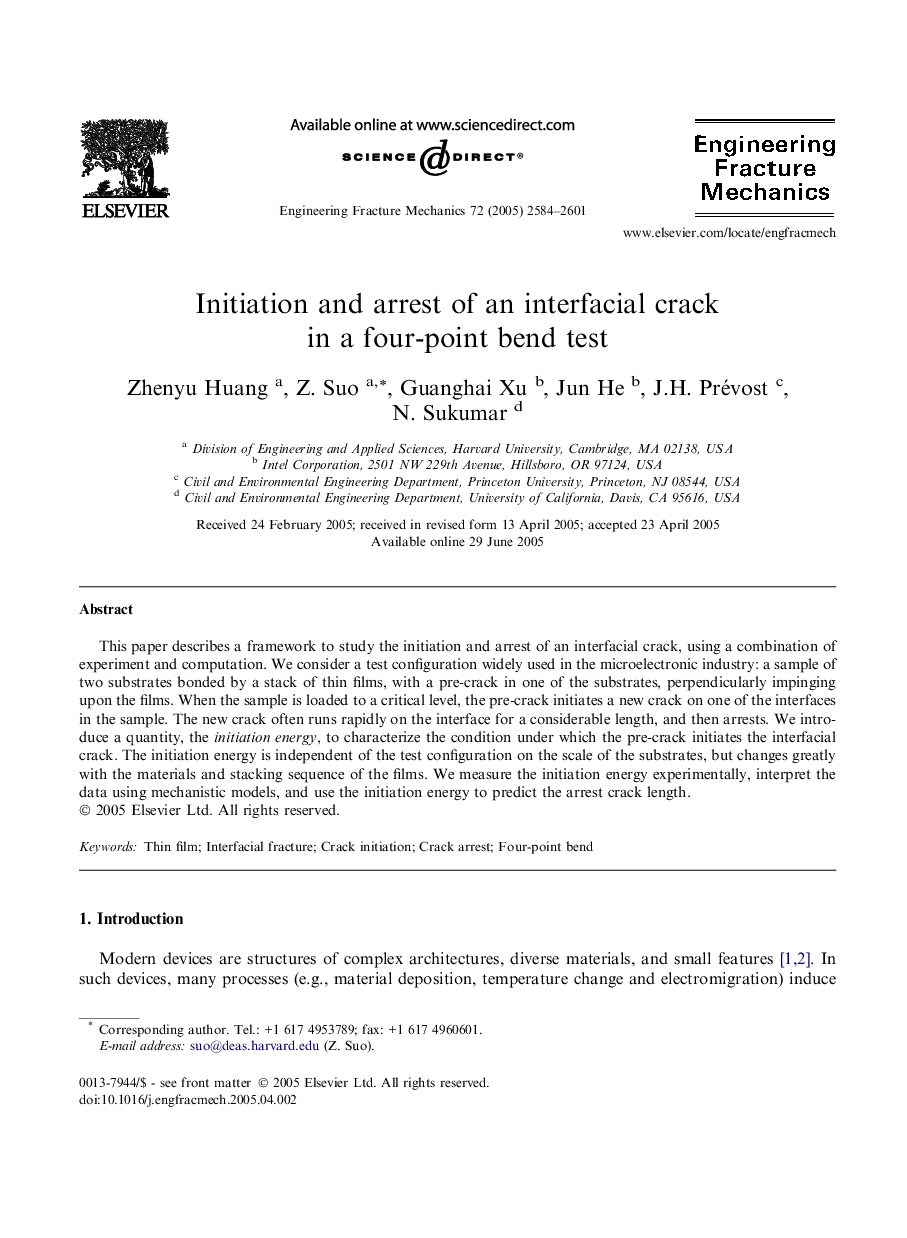| Article ID | Journal | Published Year | Pages | File Type |
|---|---|---|---|---|
| 772014 | Engineering Fracture Mechanics | 2005 | 18 Pages |
This paper describes a framework to study the initiation and arrest of an interfacial crack, using a combination of experiment and computation. We consider a test configuration widely used in the microelectronic industry: a sample of two substrates bonded by a stack of thin films, with a pre-crack in one of the substrates, perpendicularly impinging upon the films. When the sample is loaded to a critical level, the pre-crack initiates a new crack on one of the interfaces in the sample. The new crack often runs rapidly on the interface for a considerable length, and then arrests. We introduce a quantity, the initiation energy, to characterize the condition under which the pre-crack initiates the interfacial crack. The initiation energy is independent of the test configuration on the scale of the substrates, but changes greatly with the materials and stacking sequence of the films. We measure the initiation energy experimentally, interpret the data using mechanistic models, and use the initiation energy to predict the arrest crack length.
